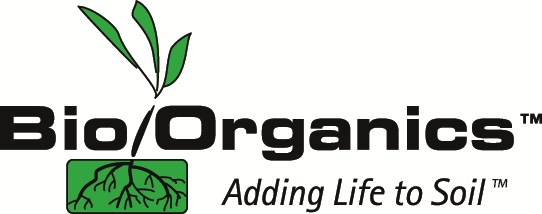As I was getting my vegetable garden beds ready for this season, it occurred to me that my biology
oriented techniques have larger scale applications for growing crops.
Here is the routine I followed:
1. My beds laid bare during the winter months, but ideally they would have had a cover of mulch in
the form of ground up crop residue, and/or cold hardy cover crop plants. This would have supported
and nourished some microbial life and earthworms during the months when no crop roots were actively
growing. Also, in early spring, a mulch layer helps the soil retain heat which promotes soil activity.
(Bare soil warms up a bit more quickly than mulched soil, but mulched areas hold in heat better.)
2. Several weeks before planting time, I very lightly applied organic fertilizer and a dusting of volcanic
minerals and worked them into the top 4-5 inches of soil with a cultivating fork, disturbing the soil as
little as possible. I do not disrupt the structure of the soil any more than necessary, and scratching the
fertilizer into the top of the soil replicates the natural recycling of leaf litter. Decomposing fungi, bacteria,
and earthworms will gradually digest and move nutrients down throughout the root zone for me.
The fertilizer I use is pelleted fish, fish bone meal, feather meal, sulfate of potash, alfalfa meal, and calcium
sulfate. The volcanic minerals are from a deposit of hydrothermally changed soft Dacite rock rich
in trace elements. This provides a “smorgasbord” assortment of reserve nutrients - macro, minor, and
trace - so my plants do not lack any needed element throughout the growing season. The mycorrhizal
fungi regulate the uptake of nutrients according to the needs of their host plants, so my concern is only
to make certain all elements are present in the soil.
3. Again, well before planting my crops, I seeded the beds with Crimson Clover inoculated with mycorrhizal
fungi spores. The clover brings the spores out of dormancy, and root exudates provide nourishment
to the fungi and other beneficial bio life in the soil. In effect, this gives the soil beneficials a head
start on the growing season. They are then at good high populations when the crops are seeded.
4. Finally, at the normal planting time for this area, I cut off the immature clover at the soil line and immediately
seed and transplant into the beds. No further fertilizer will be used during the entire season
and watering will be kept to a minimum - only when plants show wilting during morning hours. (A slightly
stressed plant stimulates mycorrhizal fungi to higher performance levels.)
The miniature scale procedures above have several adaptable applications for farms and horticultural
operations. These include the encouraging of living organisms in the soil with mulches and strategic
use of nurse crops; keeping fertilizing to a minimum (with little or no runoff); avoiding all fast-release
fertilizers and incomplete synthetic forms; providing as broad an assortment of elements as possible;
using microbial inoculants; reducing watering to a minimum; and tilling lightly (or not at all).
The good results are worth pursuing. I no longer see diseases that once were common in my earlier
chemically oriented gardens, the plants have a sturdiness and vigor that leads to exceptional productivity,
and flavors are impressive.
Don Chapman
BioOrganics, Inc.
www.bio-organics.com
June, 2001
